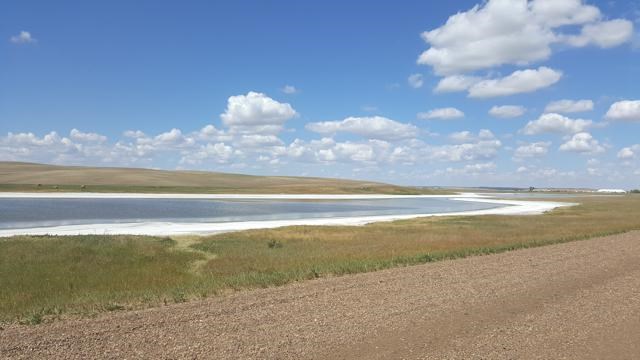The Old Wives Watershed Association held a workshop on the water quality for livestock on July 25 in Hazenmore. It proved to be a popular session with over 100 producers attending, said Tim Coloutier, a staff member at the OWWA. Water quality has been a hot topic among livestock producers after the early July deaths of 200 cattle near Chaplin due to poor quality water.
The workshop heard presentations by Agriculture Ministry specialists that covered topics about water testing, water sourcing for livestock and water programs under the Ministry and OWWA. The workshop was also conducting water testing and 193 samples were tested. As a whole, the samples varied depending on their location in the watershed. They showed a range of quality from low levels of total dissolved solids to some over the recommended TDS levels.
Water salinity levels should be below 1,000 mg/l of TDS, levels between 1,000 and 3,000 mg/l of TDS are generally suitable but may cause some loss of productivity. Levels over 7,000 mg/l are poor for livestock water and anything over 10,000 mg/l is unsuitable.
Producers were also recommended to consult their veterinarians about monitoring livestock health. They can also let producers know if they have to move stock to another pasture.
One key topic discussed at the workshop was clean water sources. There were options discussed such as water troughs, pumps and piping out water bowls from a good clean source. Another aspect of clean water was limiting the access of cattle to water sources to keep the integrity of the water. It was recommended that producers consider fencing off sloughs and creeks to limit access so cattle cannot pollute a water source. Large number of cattle can quickly change the water quality.
Planning for a water system consists of two basic steps: determining water requirements and compiling an inventory of water sources. Sources of water for range livestock can consist of a single source or a number of sources in combination. The sources can be direct from naturally-occurring surface or groundwater supplies, or can be indirect through some sort of man-made delivery system like pipelines, tank loaders, canals, and dugouts. Whatever the source or sources, they should be sufficient to meet the water requirements of the livestock to be watered, both in quantity and quality. A well-planned water system should also have a backup or secondary water source in case one source fails.
Although there has been some precipitation in August, it is not enough to dilute high salinity levels. Any precipitation falling now will be absorbed right away into the parched soil, and it is the runoff that is needed to flush out water systems. Another danger resulting from high temperatures is the appearance of blue green algae blooms on water bodies. This is caused by bacteria and is toxic to cattle, and other animals.
The Old Wives Watershed is located in southwestern Saskatchewan and is located in the Missouri River Basin. The area was originally mapped by John Palliser in the 1850’s and is considered to be the heart of Palliser’s triangle. The main source of water for the watershed is the Wood River and the major tributaries that connect to the river are the: Wiwa Creek, Notukeu River, Pinto Creek. The watershed is a closed basin watershed meaning all water sources depend on rainfall to fill bodies of water.




